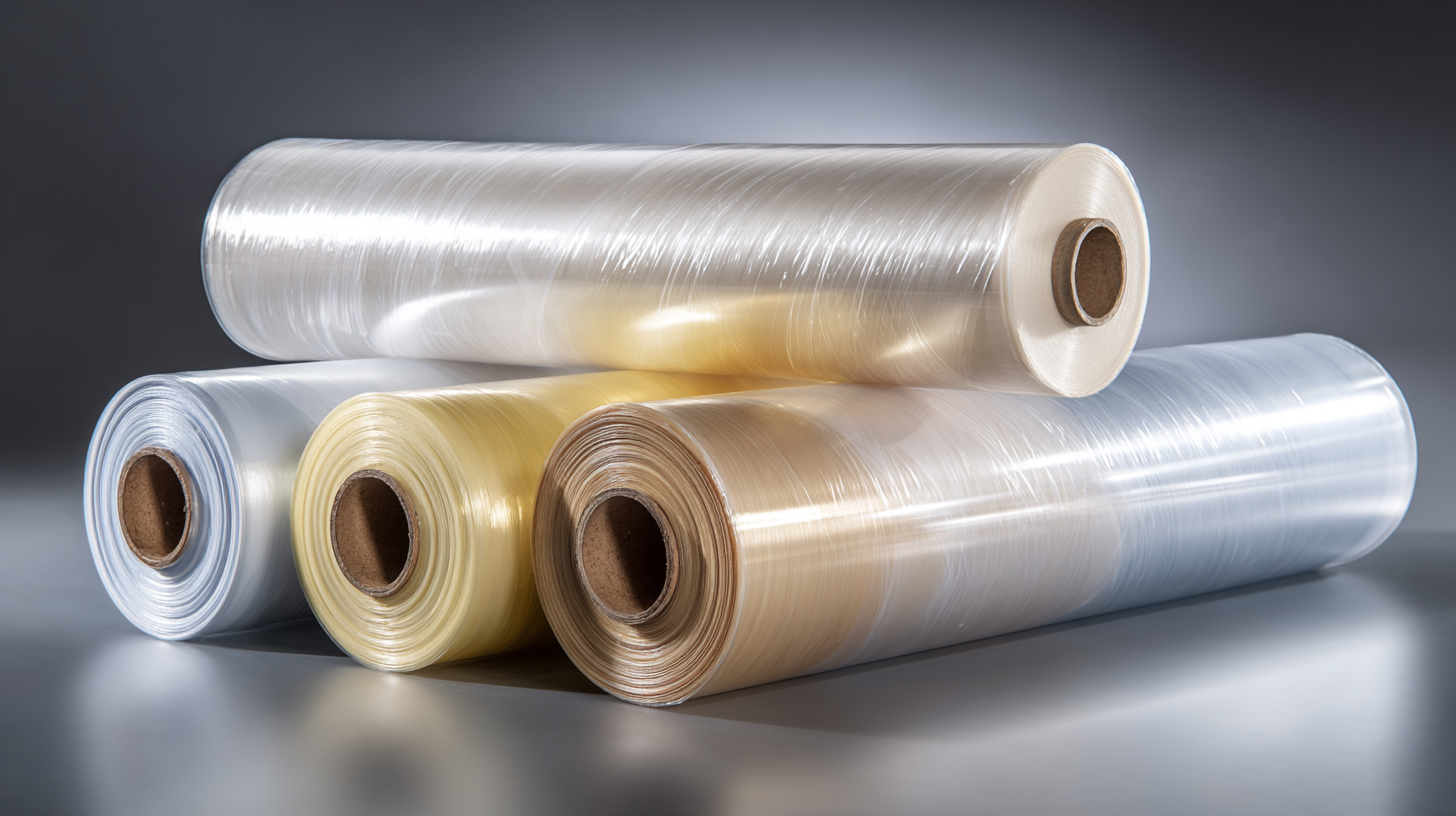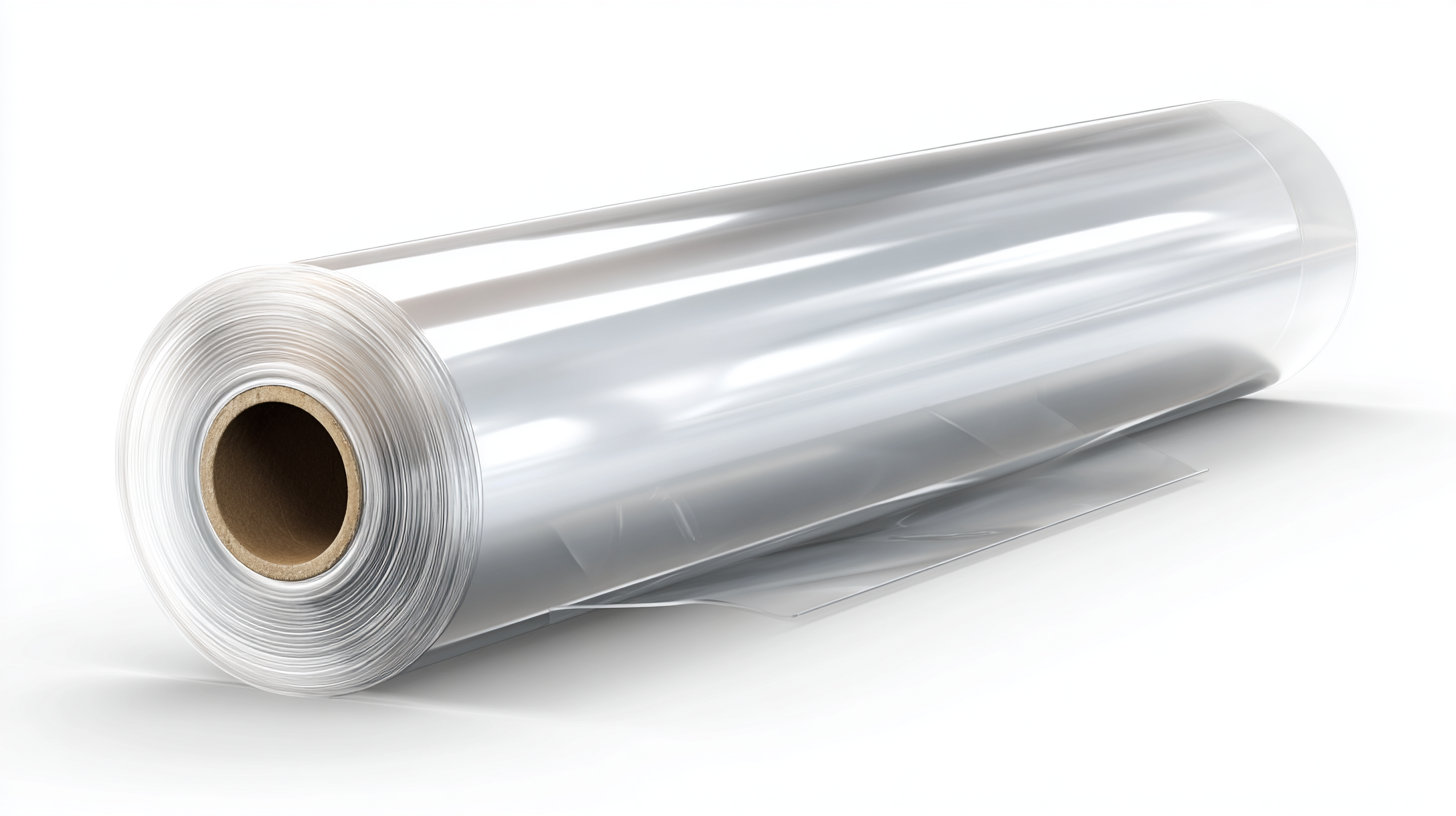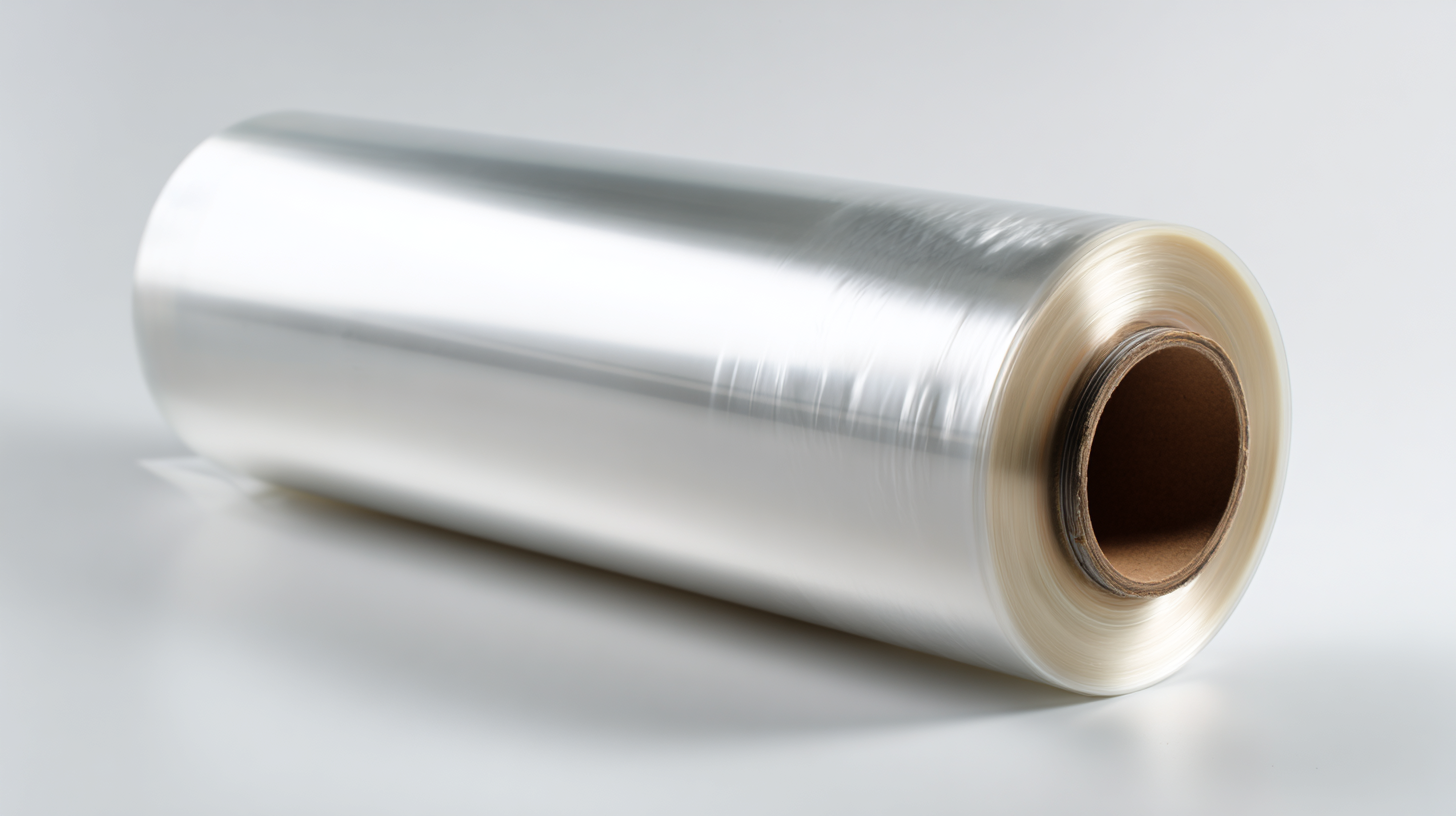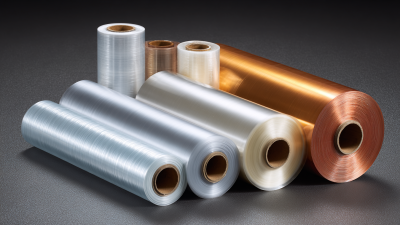Shrink Film Rolls have become a pivotal component in the packaging industry, providing not only product protection but also enhanced shelf appeal. According to recent market analysis by Smithers Pira, the global shrink packaging market is projected to reach USD 28.4 billion by 2024, driven by the growth in e-commerce and the need for high-quality packaging solutions. These films, often made from polyolefin or PVC, are designed to conform tightly around products when heat is applied, offering a streamlined appearance while safeguarding contents from dust, moisture, and tampering. With the rise in demand for sustainable packaging solutions, manufacturers are increasingly focusing on eco-friendly options within the shrink film segment, further solidifying its role in modern packaging strategies. As businesses strive to enhance operational efficiency and reduce waste, the adoption of Shrink Film Rolls is likely to grow, affirming their importance in the packaging landscape.

 Shrink film roll is a versatile packaging solution widely utilized across various industries. Defined as a continuous sheet of plastic that shrinks when heat is applied, shrink film is commonly used to tightly wrap products for protection and presentation. The characteristics of shrink film include its durability, tamper resistance, and ability to conform to the shape of the product, providing a snug fit that helps to prevent damage during shipping and handling.
Shrink film roll is a versatile packaging solution widely utilized across various industries. Defined as a continuous sheet of plastic that shrinks when heat is applied, shrink film is commonly used to tightly wrap products for protection and presentation. The characteristics of shrink film include its durability, tamper resistance, and ability to conform to the shape of the product, providing a snug fit that helps to prevent damage during shipping and handling.
One of the standout features of shrink film is its clarity, which allows the packaged product to be clearly visible, enhancing its appeal to consumers. Additionally, the film can be produced in various gauges and finishes, catering to specific packaging needs. Its elasticity enables it to accommodate different shapes and sizes, making it an ideal choice for bundling items together, protecting delicate products, or creating multi-pack offerings in retail settings. As companies constantly seek efficient and effective packaging solutions, shrink film rolls continue to play a crucial role in delivering performance and versatility in packaging applications.
Shrink film rolls are essential tools in the packaging industry, utilized for their ability to conform tightly around products when heat is applied. These films are available in various types of materials, each with its unique properties suited to different applications. Among the most common types are polyolefin, PVC, and polyethylene.
Polyolefin shrink films are favored for their versatility and resistance to punctures and tears. According to industry reports, the demand for polyolefin shrink films is projected to grow at a CAGR of 5.2% from 2021 to 2026, indicating their increasing popularity in food packaging and retail applications. These films provide clear visibility for product presentation while offering durability that meets stringent food safety standards.
PVC shrink films, on the other hand, are often used for bundling and tamper-evident applications. They are known for their excellent clarity and shrink characteristics. While the market for PVC is stabilizing, it's noted that its usage in packaging accounts for approximately 20% of the global shrink film market share, highlighting its importance particularly in the beverage sector. Lastly, polyethylene shrink films are known for their cost-effectiveness, making them a staple in industrial packaging, especially for large items or bulk packaging solutions.
| Type of Shrink Film | Material | Application | Key Features |
|---|---|---|---|
| PVC Shrink Film | PVC (Polyvinyl Chloride) | Food and Beverage Packaging | Cost-effective, clear finish, good printability |
| POF Shrink Film | POF (Polyolefin) | Retail and Industrial Products | High clarity, excellent seal strength, versatile |
| HDPE Shrink Film | HDPE (High-Density Polyethylene) | Packaging of Bottles and Containers | Exceptional durability, good chemical resistance |
| LDPE Shrink Film | LDPE (Low-Density Polyethylene) | Wrap for Palletized Goods | High stretchability, lightweight |
Shrink film is a versatile packaging solution widely utilized across various industries, ranging from food and beverage to pharmaceuticals and consumer goods. Its ability to tightly conform to products when heat is applied makes it an ideal choice for packaging multiple items together, enhancing both protection and presentation. Reports from Smithers Pira indicate that the global shrink film market is projected to reach $6.55 billion by 2027, reflecting its growing importance in packaging applications.
In the food industry, shrink film is commonly used for bundling multiple products, such as cans or bottles, while also providing a layer of tamper evidence. The pharmaceutical sector often employs shrink film for blister packaging and as a protective layer for individual product boxes, ensuring integrity during transportation. Additionally, shrink film serves the consumer goods sector through retail-ready packaging solutions that improve shelf appeal and reduce package waste.
Tip: When selecting shrink film, consider the thickness and type that best suits your products; polyethylene (PE) and polyolefin are popular choices due to their durability and clarity. Additionally, optimizing heat settings during the application process can significantly enhance the film's performance and visual appeal.
Shrink film is increasingly becoming a preferred choice in packaging due to its numerous advantages. Notably, the global shrink film market was valued at approximately $6.85 billion in 2020, and it is projected to grow significantly, reaching around $10 billion by 2027, as reported by market research analysts. This growth can be attributed to the versatile applications of shrink film across various industries, including food and beverage, personal care, and consumer goods, enhancing product shelf life while ensuring a tamper-evident seal.
One of the key benefits of using shrink film for packaging is its ability to provide optimal protection. According to a report by Smithers Pira, shrink film offers 30% more impact resistance compared to traditional packaging materials, making it ideal for preserving fragile items during transit. Additionally, its conforming property ensures that products are well-protected against dust, moisture, and external contaminants, reducing spoilage and waste. Furthermore, the lightweight nature of shrink film not only decreases shipping costs but also minimizes the carbon footprint associated with transportation, aligning with the industry's move towards more sustainable packaging solutions.
Shrink film rolls are versatile packaging solutions that are increasingly popular due to their ability to secure and protect products. Proper application of shrink film begins with choosing the right film type and thickness based on the product's requirements. It is important to preheat the film if necessary, which allows for better shrinkage and a tighter fit around the product. Once the film is wrapped securely around the items, heat sealing equipment is used to shrink the film tightly, ensuring that the packaging adheres well without compromising the integrity of the contents.
In recent developments within the flexible packaging market, innovations have emerged that enhance both functionality and sustainability. Companies are focusing on producing shrink films that not only offer effective performance but also present eco-friendly attributes. Packaging materials are becoming increasingly recyclable, responding to consumer demand for sustainable practices. The advancements in shrink film technology, such as the introduction of films that provide more footage at the same cost, further highlight the ongoing trend toward efficient and sustainable packaging solutions. As businesses seek to improve their packaging processes, understanding and utilizing shrink film rolls effectively is essential in meeting both operational and environmental goals.







